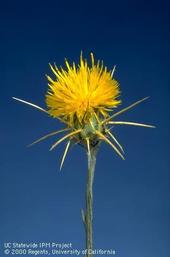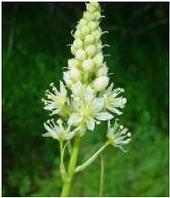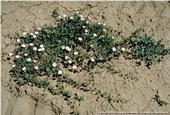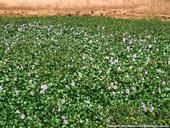- Author: Brad Hanson

Over the weekend, the Sacramento Bee published an article discussing the invasiveness and spread of yellow starthiste (Centaurea solstitialis) in California. http://www.sacbee.com/2011/08/21/3847369/invasive-yellow-star-thistle-aims.html
It was written as an "interview" with the weed which, although a little cute for me, may help the general public understand a bit more about yellow starthistle which currently infests over 15 million acres of rangeland and noncrop areas of California.
For folks interested in more scientific information on yellow starthistle biology, ecology, and management in California and other...
- Posted By: Brad Hanson
- Written by: Reposted from WSSA

I ran across a Weed Science Society of America (WSSA) press release from last summer that I found interesting.
The article, entitled "The Deadly Problem of Poisonous Weeds", outlines ten poisonous weeds in North America that are particularly dangerous and features information from UC Davis Cooperative Extension Weed Specialist Joe DiTomaso.
The article includes basic information on the toxicity, identification, and links to photos of::
1. Poison hemlock
2. Waterhemlocks
3. Oleander
4. Bittersweet nightshade
5. Common pokeweed or pokeberry
6....
- Posted By: Joseph DiTomaso
- Written by: Joseph M. DiTomaso, Lizabeth Seebacher, Christiana Conser, Rachel Brush
The nursery industry has introduced thousands of ornamental plants, but only a small percentage (~1%) has escaped to become invasive and cause economic or ecological damage. Thus, the removal of these known invasives should not present a major economic hardship on the industry. In addition, a pre-screening of potential introductions would be expected to accept most species as possessing low invasive potential, and identify relatively few as having a high probability of becoming invasive.
Currently, several Weed Risk Assessment (WRA) models have been developed, the most common of which was developed by Paul Pheloung and his colleagues in Australia. This model is currently used to evaluate new introductions in other parts of the...
- Posted By: John A Roncoroni
- Written by: John Roncoroni

Field Bindweed (Convolvulus arvensis)
The late spring rains that fell in Northern California seemed to benefit some plants more than others. One weed that appears to be doing very well this year is Field bindweed. Field bindweed (Convolvulus arvensis), is a perennial weed that spreads by seed, creeping roots and rhizomes. You may call it morningglory or wire weed. It has arrow-shaped leaves and white to pink trumpet-shaped flowers and can grow spread along the ground from early spring until late fall. Bindweed’s creeping roots can penetrate the soil to more than 10 feet and send up vertical shoots that look much like seedlings, but unlike seedlings, are part of a much larger plant. Studies...
- Author: Brad Hanson

We received several calls yesterday from a news organization in San Francisco about a CDFA biocontrol program for an invasive aquatic weed, water hyacinth.
I'm a terrestrial weed guy who works mostly in orchards and vineyards, not aquatics so I kept a low profile. However, I think biocontrol of invasive weeds is really interesting and decided to share two links about the program. This from KTVU Channel 2 in San Francisco: http://www.ktvu.com/news/28704763/detail.html and here is the official Press Release on the CDFA program:


